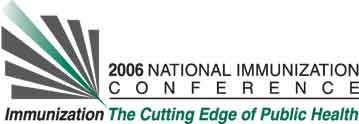Karen Lee Pielak1, Cheryl McIntyre
1, Beth Halperin
2, Jane Buxton
1, and Valencia Remple
1. (1) Communicable Disease Epidemiology Services, British Columbia Centre for Disease Control, 655 West 12th Avenue, Vancouver, BC, Canada, (2) Clinical Trials Research Center, IWK Health Centre, 8 West, 5850 University Avenue, Halifax, NS, Canada
Learning Objectives for this Presentation:
By the end of the presentation participants will be able to appreciate the process of applying a theoretical framework to the development of an instrument measuring determinants of immunization practices.
Background:
Survey instruments used to assess the motivators and barriers to immunization practices are generally not based on theoretical frameworks that enable results to inform behavioural change interventions.
Objectives:
To develop and validate a research survey instrument that measures factors associated with immunization providers' (IP) intentions regarding key immunization practices based on the Theory of Planned Behaviour(TPB). The final instrument will be used for a national survey with the ultimate goal of informing the development of targeted IP education programs.
Methods:
An elicitation survey was conducted with 125 IP to determine what key behaviours(domains) were viewed as most critical to an optimal immunization delivery program. Thematic analysis produced nine domains and specific items measuring intentions, attitudes, subjective norms, and perceived behavioural control related to each domain. Content validity was evaluated by an expert panel of IP calculating a content validity index (CVI) for each item and domain. Only those domains and items with a statistically significant (p<0.05) CVI were retained. Field testing allowed for further refinement.
Results:
The current instrument is comprised of 91 items assessing seven domains: (i) multiple injection for infants; (ii) annual receipt of influenza vaccination; (iii) offering immunization at each client encounter; (iv) pediatric MMR administration; (v) adverse reaction reporting; (vi) benefit-risk communication; and (vii) immunization of clients with minor illnesses.
Conclusions:
Using the TPB, we have developed a survey instrument that may inform the development of behavioural change interventions targeted at one or more of the psychosocial determinants of behavioural intention among IP. The survey is currently underway in British Columbia, and several other Canadian provinces and territories are considering the use of the instrument to inform a national perspective.
See more of Posters
See more of The 40th National Immunization Conference (NIC)

